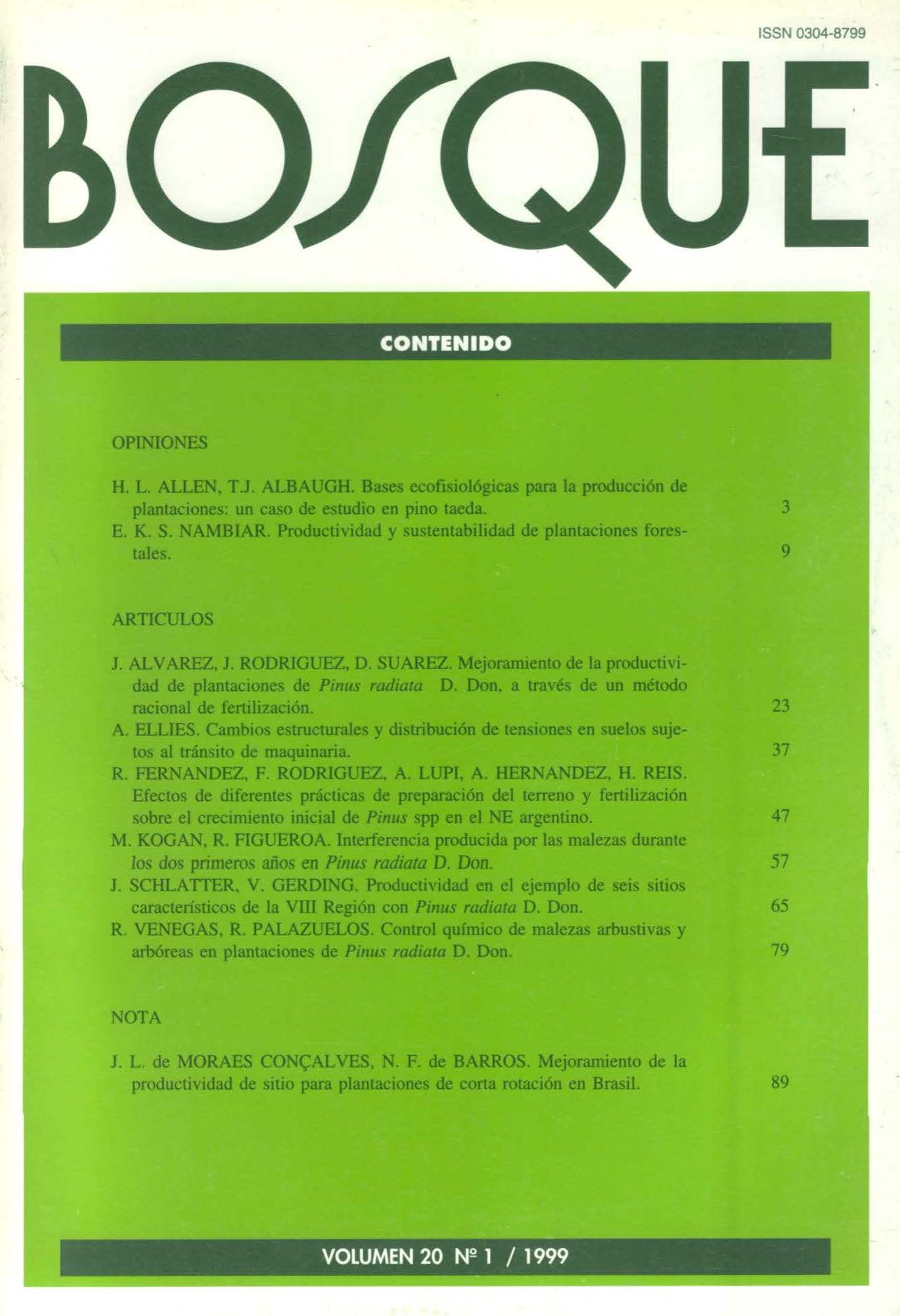Main Article Content
Jun 30, 1999
Abstract
Historically, the practice of silviculture has focussed on controlling the composition, quantity, and structure of forest vegetation and the maintenance of site quality. As forest plantations have become important sources of fiber, fuel, and structural material, this custodial approach has given way to active intervention to improve both genetic and soil resources. Effective manipulation of the genetic and soil resources requires a basic understanding of how resource availability limits forest production and how crop trees may differ in their ability to acquire and utilize these resources. It is now generally accepted that much of the variation in wood production can be accounted for by variation in light interception. In pine plantations in the southeastern U.S., low nutrient availability is the principal factor causing suboptimal levels of leaf area and therefore production. Few studies have examined the effects of both nutrient and water availability on production. We highlight the results from one such study, the SETRES study that is now underway in the southeastern USA with loblolly pine.


